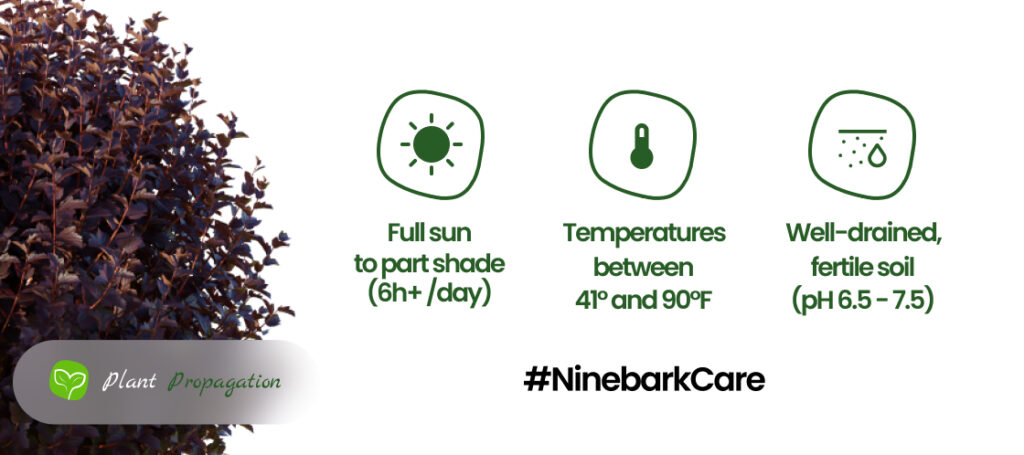
Pruning ninebark doesn’t have to be daunting—it’s a straightforward thing that can enhance the beauty and health of your shrub. In this guide, we’ll walk you through the essential steps and techniques to prune your ninebark with confidence. From timing your pruning to selecting the right tools, we’ll cover everything you need to know to keep your shrub thriving. So, grab your pruning shears and let’s get started on shaping your garden’s gem into a masterpiece of natural beauty.
When to Prune Ninebark
Giving your ninebark shrub a trim early in the growing season is key to its health and vitality. This sweet spot usually falls between late winter and early summer, but the exact timing can vary based on where you live. So, take a moment to observe when nature starts stirring in your area—it’s like nature’s own alarm clock for your gardening tasks.
By pruning during this period, you’re giving your ninebark the best chance to flourish without feeling too stressed out. Plus, trimming away any dead or overgrown branches allows more sunlight to reach the inner parts of the shrub, encouraging new growth from the inside out.
So, mark your calendar for a little early spring pruning session—it’s like giving your ninebark a spa day to rejuvenate and thrive.
Essential Tools & Pruning Techniques
When it comes to pruning anything, having the right tools makes all the difference. Here’s what you’ll need:
-
Pruning Shears:
- These are like your precision scissors for trimming shoots and stems up to 0.75 inches (1.9 cm) thick. Use them for fine-tuning and shaping the smaller parts of your shrub.
-
Loppers:
- Think of these as your heavy-duty scissors for thicker branches, up to 1.5 inches (3.8 cm) thick. They’re perfect for thinning out dense areas or taking care of larger branches.
-
Hand Saw:
- For the big jobs, you’ll need a hand saw to tackle branches over 1 inch (2.5 cm) thick. Make sure you’ve got a sturdy one that can handle branches up to 4 inches (10 cm) thick, especially for bigger pruning tasks.
-
Gloves:
- Protect your hands with a sturdy pair of gloves to shield them from thorns, prickles, and rough branches. Choose gloves that fit comfortably and provide ample protection without compromising dexterity.
-
Safety Goggles:
- Keep your eyes safe from flying debris and sharp twigs with a pair of safety goggles. Ensure they fit snugly and provide full coverage to prevent any accidents while pruning.
With these tools in your arsenal, you’ll be ready to shape your ninebark shrub like a pro.

Pruning Ninebark Step-by-Step
Let’s walk through the process of pruning ninebark step by step.
- Timing is Key: Prune early in the growing season, between late winter and early summer, before the shrub develops too much. Keep an eye on your region’s climate to determine the best time for pruning.
- Look for Flowering Signs: Wait for flowers to appear on your ninebark as an indicator that it’s time to prune. Avoid delaying pruning for more than a few days after the flowers appear to prevent damage to the plant.
- Perform Light Pruning in Early Summer: After the initial pruning, perform maintenance pruning in early summer to remove damaged or unhealthy branches. Avoid pruning ninebark past the middle of summer as it enters its dormant phase.
- Remove Dead and Damaged Branches: Check for dead or broken branches and remove them completely. Cut branches near the ground or as close to the connecting branch as possible.
- Thin Out Overcrowded Areas: Thin out stems and branches in crowded areas to promote healthier growth. Remove branches that are rubbing together or blocking light from reaching the interior of the plant.
- Eliminate Weak Shoots: Spot and remove weak or spindly shoots. Cut them as close to the connecting branch as possible without leaving stubs.
- Make Clean Cuts: Cut branches at about a 45-degree angle, with the lowest part even with the connecting branch. Ensure a smooth transition by leaving the highest part of the branch about 0.25 inches (0.64 cm) from the connecting branch.
- Leave Base Wider Than Top: Prune the shrub at a slight angle to leave the base wider than the top. This ensures adequate light reaches the bottom of the shrub for healthy growth.
Aftercare
After pruning, your ninebark will benefit from some tender loving care. Here are some tips for you:
- Keep It Watered: Make sure your ninebark gets a good drink regularly, especially when it’s dry out. Water deeply but don’t drown it—just let the soil soak up what it needs.
- Feed It Right: Give your shrub a boost with liquid fertilizers mixed with water a few times a year. Start in late April and keep it up until mid-July to keep your ninebark happy and healthy.
- Go Organic if You Want: If you’re into organic stuff, try using manure or other organic fertilizers. Follow the instructions and give your plant the organic love it deserves.
- Winter Check-Up: During winter, your ninebark doesn’t need much, but it’s good to give it a quick look now and then. Watch out for any signs of damage.

Frequently Asked Questions
When should I prune my ninebark?
You’ll want to give it a trim early in the growing season, usually between late winter and early summer, depending on where you live. Just think about when things start growing in your area. Pruning then helps it grow strong without getting too stressed out.
Can I prune ninebark in the summer?
You want to do most of the pruning early in the growing season, but your Ninebark bush can take pruning in early Summer too.
How often should I prune my ninebark shrub?
Just like many other shrubs, Ninebark benefits the most from annual pruning, You can shape it and remove dead or diseased branches to keep it in top shape.

